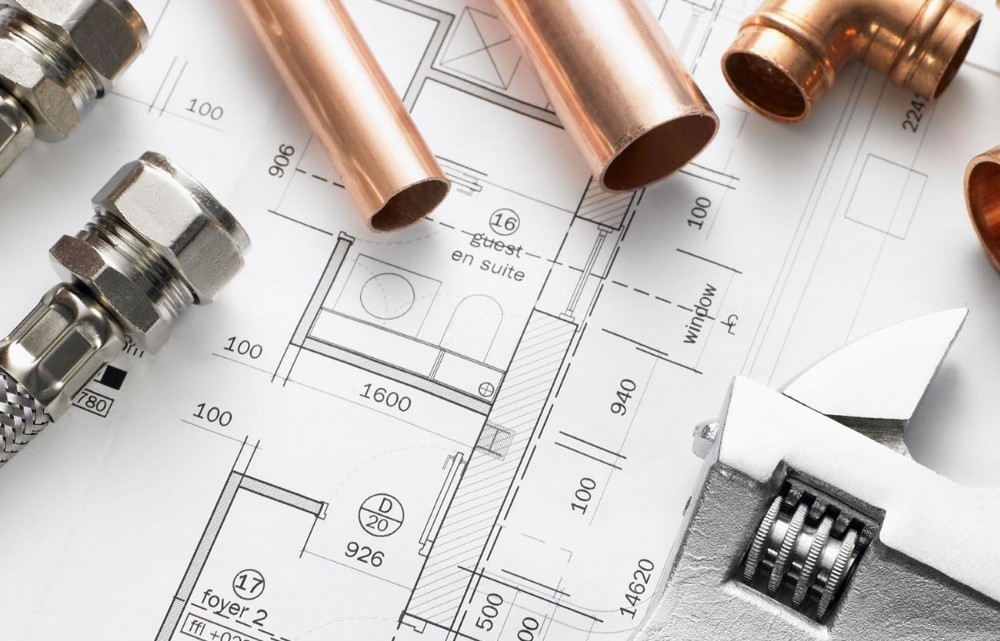Ventilation Systems & Installation

Ventilation Systems & Installations: Essential Elements for Comfortable and Healthy Spaces
Every building takes shape at the beginning of its construction process through a detailed project. These projects guide the engineering and craftsmanship teams involved in the construction process. The installation systems that ensure the functionality and comfort of a building’s interior spaces are among its fundamental components. Electrical, water, natural gas, and ventilation systems are crucial for the efficient, safe, and comfortable operation of all living spaces. The design and installation of these systems are carried out through the collaboration of expert engineers and interior designers.
Ventilation Systems: Solutions That Provide Clean Air and Energy Efficiency
Ventilation is a crucial factor in regulating indoor air quality and climate within a building. Especially in indoor environments, providing clean air flow, controlling room humidity levels, and refreshing indoor air are essential functions that ventilation systems fulfill. A good ventilation system not only creates a healthy living environment but also increases energy efficiency.
Natural and Mechanical Ventilation Solutions
Ventilation systems are generally categorized into two main types: natural and mechanical ventilation. Natural ventilation allows air to enter naturally through windows, doors, and ventilation shafts. This method is often used in older buildings and is advantageous for energy savings. However, for larger buildings and modern structures, mechanical ventilation systems are necessary. These systems use fans and air ducts to direct airflow and ensure a continuous supply of fresh air.
Impact of Ventilation System on Energy Efficiency and Comfort
Energy-efficient ventilation systems used in modern buildings enhance indoor comfort while reducing operating costs. Heat recovery systems minimize energy consumption by reducing the effect of hot or cold air from the outside environment during air exchange. These systems play a significant role in energy savings, particularly in commercial buildings. Furthermore, controlling the humidity balance in a space through a ventilation system is vital for maintaining a healthy indoor environment.
Installation Systems: Safe Distribution of Water, Electricity, and Natural Gas
Installations are systems that provide the distribution of water, electricity, natural gas, and other essential infrastructure services required to maintain the living functions of a building. The proper functioning of these systems directly impacts the safety and comfort of the building’s occupants.
Electrical Installation
Electricity is one of the basic needs of any building. Electrical installations consist of energy lines, circuit breakers, outlets, and lighting systems. Properly designing electrical installations is important for ensuring energy efficiency and safety within the building. With advancements in technology, energy-efficient systems and smart home installations have become increasingly popular in electrical design.
Water Installation
Water installations ensure the safe distribution of water in both the interior and exterior of a building. Proper installation of water systems is critical to prevent water wastage and ensure the supply of clean water. Modern materials and technologies are used to ensure the efficient operation of drinking water, hot water, and wastewater systems in buildings. Additionally, solutions such as low-flow faucets, water purification systems, and water recycling methods are becoming more common to conserve water.
Natural Gas Installation
Natural gas installations are essential for heating, providing hot water, and cooking in buildings. Distributing natural gas safely requires expert knowledge and experience. Correct installation and maintenance of the system are crucial for preventing gas leaks. Furthermore, modern natural gas systems provide energy efficiency and help reduce costs.
Planning and Implementation Process of Installation Systems
Before the installation of each system, a correct engineering solution must be provided in accordance with the building’s overall project plan. The design of electrical, water, natural gas, and ventilation systems is carried out by specialized engineers, and these designs are integrated into the architectural plans of the building. Detailed calculations made during the project phase ensure the correct selection of materials and technologies. During the installation of these systems, compliance with safety regulations is crucial for worker health and safety.
Conclusion
Ventilation systems and installations are among the most essential elements that ensure the functionality of any building. Properly designed electrical, water, natural gas, and ventilation systems enable the creation of safe, comfortable, and energy-efficient living spaces. These systems not only enhance the quality of life but also contribute to energy savings through environmentally friendly solutions. With the collaboration of expert engineers and interior designers at every stage of construction, spaces become not only aesthetically pleasing but also efficient and sustainable.
For turnkey projects, feel free to contact us.
